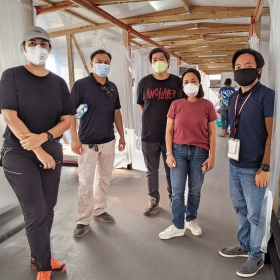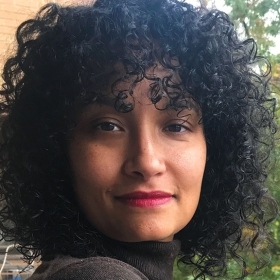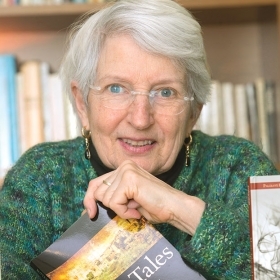Denise Villar de Castro ’98
“To see the bayanihan spirit every day in the selfless and generous efforts of everyone involved in this project gives me hope that we can indeed build as one to heal as one through this pandemic.”

Architect Denise Villar de Castro ’98 (left, in white cap) and her collaborators stand in an emergency quarantine facility they created outside the Taguig Pateros District Hospital.
In what’s typically an employee basketball court outside Manila’s leading infectious disease hospital, Denise Villar de Castro ’98 straps on a mask to show workers how to make walls by affixing plastic sheets to a wooden frame they’ve built in just two days.
The emergency quarantine facility, or EQF, is one of several dozen the architect has helped create to care for COVID-19 patients in her home country of the Philippines, where overwhelmed hospitals hit full capacity. Founder and principal of DEQA Design Collaborative, Denise got involved with the project after answering a call for help from a fellow Filipino architect who, years earlier, designed a similar structure for a design fair. She’s now the initiative’s principal architect and has taken a leading role in fund-raising, purchasing materials, and supervising on-site construction.
“It was without hesitation that I volunteered myself and my team to collaborate with this collective of architects, engineers, doctors, and even the Armed Forces of the Philippines,” she says.
The effort kicked off in late March, when she asked the chief administrative officer at the Research Institute for Tropical Medicine—the father of an architect on her team—whether a temporary facility outside his hospital would help. “The answer came within the hour as a resounding yes,” she says. Three days later, materials arrived and construction got underway that same day.
Each facility includes around 15 patient beds, a nurse station, toilet and shower facilities, and ventilation. Denise and her colleagues have made designs available online so anyone can access them, and she’s consulted with architects in other Filipino cities, advising them on building their own structures.
Working on the project hasn’t come without serious challenges. With suppliers closed, sourcing materials has been difficult. “Also, every day we all risk getting exposed to the virus,” she says.
Growing up, Denise was torn between becoming an artist and following in her cousins’ footsteps by going into medicine. In college, she designed her own architecture degree, enrolling in liberal arts classes at Wellesley and more technical ones at MIT. Political science courses with Professor Katharine Moon on development and urban issues and gender politics stood out.
“They highlighted to me that everything is political, and design is not exempt,” she says. “Design can be used for a purpose, and powerful ones at that.”
She earned a master’s in architecture from Harvard; then, in 2003, when visiting family in Manila, an architect she apprenticed with years earlier asked her to work with him. Denise said yes and ended up helping to design the Philippine Pavilion at the 2005 World Expo in Aichi, Japan, among other projects, and presenting to CEOs and government officials. “It was baptism by fire,” she says.
Soon after, she took commissions from friends and family—vacation homes, boutiques, and restaurants—and eventually moved into a shared office, learning how to manage a business along the way.
Now, 10 years later, she’s proud of the work her team is doing to help during the pandemic. “Seeing how our design community and the private sector, through donors and suppliers, have really come together to support our efforts to do our part in this pandemic is inspiring,” she says.
In the Philippines, the concept of “community spirit and cooperation,” or bayanihan in Tagalog, is a core value. “To see the bayanihan spirit every day in the selfless and generous efforts of everyone involved in this project gives me hope that we can indeed build as one to heal as one through this pandemic,” she says.


